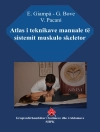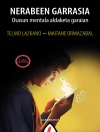Co-occurring Mental Illness and Substance Use Disorders: A Guide to Diagnosis and Treatment provides a clinically detailed, evidence-based, and exhaustive examination of a topic rarely plumbed in psychiatry texts, despite the fact that co-occurring mental illness and substance use disorders are common. The authors argue for a more holistic and integrated approach, calling for clinicians to tactfully but persistently evaluate patients for a broad range of co-occurring disorders before determining appropriate treatment. Focusing on a substance use disorder in isolation, without determining whether another psychiatric disorder is co-occurring, can doom treatment efforts, and the reverse also is true. To help clinicians keep the big picture in mind, the book is organized around 18 cases, each of which addresses a particular diagnostic skill (e.g., assessment), group of disorders commonly comorbid with substance use disorders (e.g., PTSD, eating disorders), specific treatment (e.g., pharmacological interventions), or special population (e.g., adolescents). This case-based approach makes it easy for readers to understand strategies and master transferable techniques when dealing with their own patients. Because the initial face-to-face sessions are especially important with this patient population, the book includes chapters on the diagnostic assessment and the initial interview, as well as offering interviewing tips throughout to help the clinician develop the necessary care and skill in this arena. Also included is a chapter on integrating motivational interviewing into the treatment. Each of the 18 cases stands alone, allowing the reader flexibility in using the text. For example, the 18 cases and discussions can be read sequentially, or as needed, depending on the reader’s special interest or current need. The book also features chapters on how to effectively work with patients whose disorders might be affecting other members of a patient’s family, since the likelihood of a successful outcome is enhanced if an integrated treatment plan is developed for their co-occurring disorders. The questions that accompany each chapter can be used as an organizational tool prior to reading or to test knowledge and comprehension afterward. The text is completely up-to date and provides DSM-5 diagnostic information essential to each case.
Co-occurring Mental Illness and Substance Use Disorders: A Guide to Diagnosis and Treatment offers a straightforward approach to people with complicated presentations, offering mental health clinicians the skills they require to effectively assess, diagnose, and treat these patients and their families.
表中的内容
Introduction Part 1: The Initial Interview and Comprehensive Assessment Chapter 1. The Initial Interview Chapter 2. The Comprehensive Assessment Part 2: Co-occurring Disorders Chapter 3. Depressive and Bipolar Disorders Chapter 4. Anxiety Disorders Chapter 5. Posttraumatic Stress Disorder Chapter 6. Psychotic Disorders Chapter 7. Personality Disorders Chapter 8. Attention-Deficit/Hyperactivity Disorder Chapter 9. Eating Disorders Chapter 10. Gambling Disorder Part 3: Specific Treatments Chapter 11. Twelve-Step Programs Chapter 12. Motivational Interviewing Chapter 13. Inpatient Treatment of Co-occurring Disorders Chapter 14. Pharmacological Interventions Part 4: Special Populations Chapter 15. Adolescence Chapter 16. Geriatrics Chapter 17. LGBTQ Population Chapter 18. Incarceration Appendix: Answer Guide Index
关于作者
Jonathan D. Avery, M.D., is Assistant Clinical Professor of Psychiatry and Assistant Dean of Student Affairs at Weill Cornell Medical College; and Assistant Attending Psychiatrist at New York-Presbyterian Hospital, Payne Whitney Clinic, in New York, New York.John W. Barnhill, M.D., is De Witt Wallace Senior Scholar, Professor of Clinical Psychiatry and Medical Ethics, and Vice Chair for Psychosomatic Medicine in the Department of Psychiatry at New York Presbyterian Hospital/Weill Cornell Medicine, in New York, New York.












